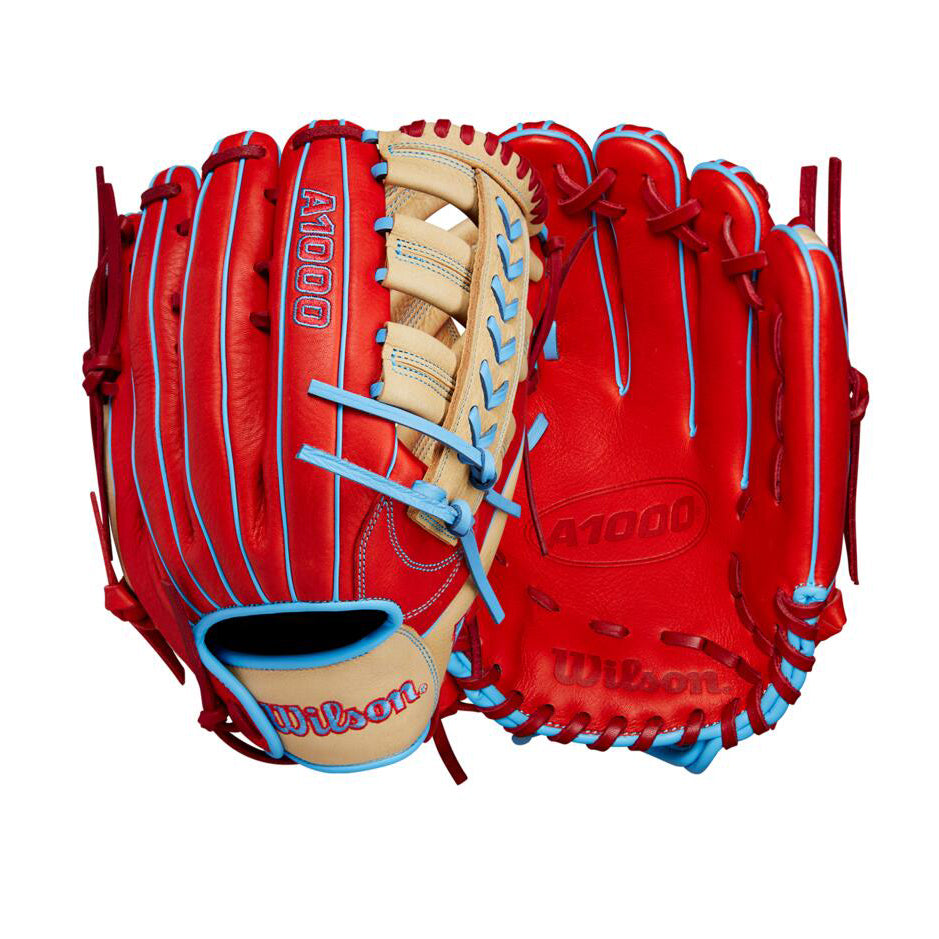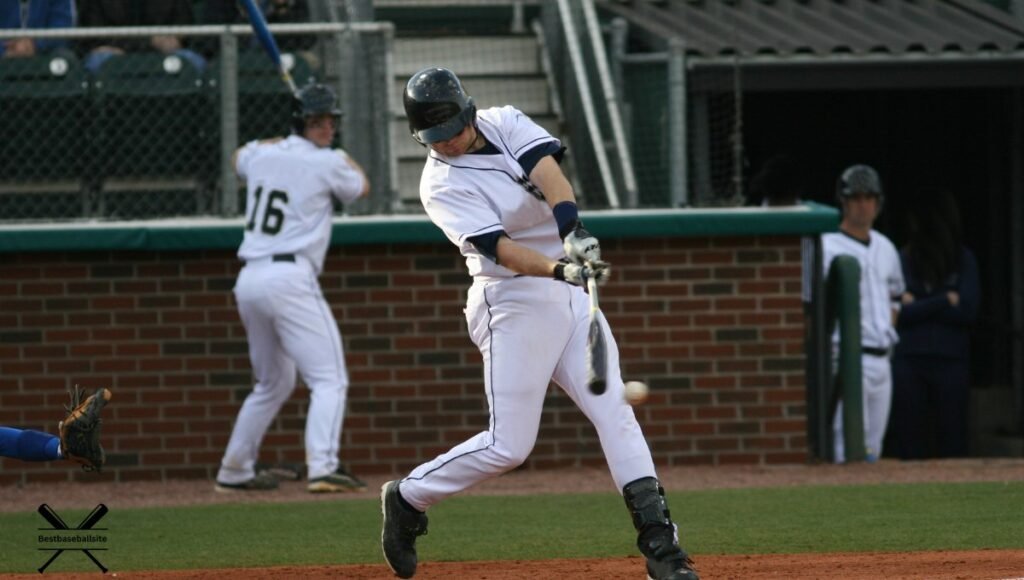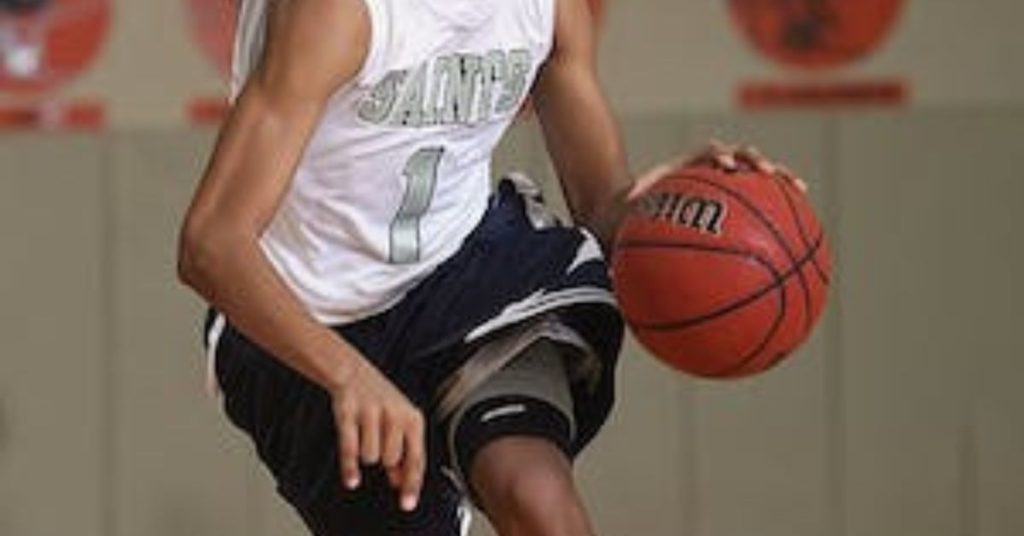Wondering what to do when your baseball glove gets wet? Learn expert care tips to dry and maintain your glove, ensuring it stays in top condition. Click now for step-by-step guidance!
A soaked baseball glove can be a cause for concern for any player, from amateur to professional. While the leather is durable, it’s vulnerable to water, which can harm its shape and performance. Understanding the proper steps to salvage your glove is crucial.
Waterlogged leather may become stiff, lose its shape, or even start to rot if left untreated. Maintaining the longevity and effectiveness of your baseball glove hinges on swift and correct drying methods. Deal with a wet glove as soon as possible to ensure it remains a reliable part of your game day equipment. Continue with our detailed guidance to turn your dampened spirits—and glove—back to their optimal state.
Getting Wet: The Impact On Your Baseball Glove
No baseball glove is immune to water. Whether you’re caught in an unexpected rainstorm or accidentally dropped it in a puddle, water can spell trouble for your trusted mitt. Understanding the risks associated with moisture and how it affects different materials can help preserve your glove’s lifespan and performance.
The Risks Of Moisture Damage
Wet leather loses strength and flexibility. Your glove might become stiff or deformed. Over time, moisture can cause mold and mildew to grow. This not only smells bad but can also destroy the leather. Here’s what to watch out for:
- Stiffness and Cracking: As leather dries, it can harden and split.
- Mold and Mildew: These fungi thrive in damp, dark spaces like a wet glove.
- Bad Odor: A musty smell is often the first sign of microbial growth.
- Wear and Tear: Wet leather is vulnerable to abrasions and decay.
Material Considerations And Water Exposure
Each glove material has different weaknesses to water. Here’s a comparison:
| Material | Water Reaction | Care Needed |
|---|---|---|
| Leather | Absorbs moisture quickly | Dry gently without heat |
| Synthetic | Less prone to water damage | Wipe-down with a dry cloth |
| Treated Leather | Resists water better than untreated | Condition regularly after drying |
No matter the material, act quickly to minimize water damage. Proper drying and conditioning can save your glove and keep you in the game.

Credit: www.diamondsportgear.com
Initial Response: Act Fast To Mitigate Damage
Got a soaked baseball glove? Quick action can save the game!
A wet baseball glove can feel like a major league setback. But, don’t let moisture bench your favorite mitt. With immediate response and the right maneuvers, you can prevent lasting damage and get back in play.
Steps For Immediate Action
- Remove excess water by gently pressing a towel against the glove.
- Avoid direct heat, which can warp and deteriorate the leather.
- Shape the glove by inserting a baseball in the pocket and wrapping it with bands.
- Air dry the glove in a well-ventilated area away from direct sunlight.
- Condition the leather after it’s dry to restore flexibility and prevent cracks.
Dos And Don’ts When Your Glove Gets Wet
| Do | Don’t |
|---|---|
| Blot with a clean towel. | Wring or twist the glove. |
| Let it air dry naturally. | Use a hair dryer or place on a radiator. |
| Insert a ball to preserve shape. | Leave it flat or bunched up. |
| Condition the leather post-drying. | Ignore maintenance after it’s dry. |
Home Remedies: Quick Fixes With Common Household Items
Home Remedies: Quick Fixes with Common Household Items can save the day when your baseball glove gets wet. Instead of worrying about long-term damage or shelling out for professional services, you can use things you already have at home. These simple tips will help bring your glove back to perfect playing condition without a trip to the store.
Using Newspapers To Absorb Moisture
Wet baseball gloves need attention fast. A great absorbent, like newspaper, does the trick. Here’s a quick method:
- Open the glove to its widest.
- Stuff it with dry newspaper.
- Replace the newspaper once it feels damp.
- Repeat until the glove feels dry.
The Role Of Air Circulation In Drying
Air circulation is key to preventing mold and bad smells. Here’s how to ensure proper drying:
- Place the glove in a well-ventilated area.
- Avoid direct sunlight or heat sources, which can warp the leather.
- Consider using a fan to increase air flow.
Deep Cleaning: Addressing Mud And Dirt
If your baseball glove takes a dive into a puddle, worry not! Deep cleaning can restore its glory. Mud and dirt are a glove’s foes but with the right approach, you can easily win this battle. This section tackles the nitty-gritty of getting your glove back in game shape after a dirty encounter. Let’s roll up our sleeves and get to work on that soiled mitt!
Effective Cleaning Solutions
Choosing the right cleaning agent is essential:
- Mild soap: Stay safe with a gentle, pH-neutral cleaner.
- Saddle soap: Ideal for leather, this old-timer’s trick works wonders.
- Specialized cleaners: Products designed for leather goods penetrate and lift dirt efficiently.
Remember, harsh chemicals can harm your glove. Always opt for gentle, leather-friendly options.
Techniques For Stubborn Stains
Don’t let tough stains intimidate you:
- Start by removing excess mud gently with a soft brush.
- Dampen a cloth with a cleaner and pat the stained area.
- Avoid over-wetting the leather to prevent damage.
- Use circular motions to lift the dirt without roughening the leather’s surface.
- For persistent spots, apply a leather conditioner after cleaning to nourish the material.
Allow the glove to air dry completely in a cool, shaded spot after cleaning. Direct sunlight can cause the leather to crack.
Preserving Your Glove’s Shape During The Drying Process
Preserving Your Glove’s Shape During the Drying Process is vital to maintain its snug fit and performance. After your baseball glove encounters water, the correct drying procedure can make a world of difference. Follow these steps to ensure it stays in perfect shape for the next big game.
Stuffing Strategies To Maintain Form
Stuffing your glove properly is crucial. Use these simple methods:
- Use a clean towel to pat down the glove, removing excess water.
- Grab some wadded newspapers or a small cloth to stuff inside the palm.
- Shape the glove as though it’s about to catch a ball.
- Surround it with more towels to hold its form.
This method maintains the pocket and keeps the fingers properly aligned.
Importance Of Avoiding Direct Heat
Direct heat is your glove’s worst enemy. It can warp the leather or cause it to crack. Consider these tips:
- Never use a hairdryer or a radiator for drying your glove.
- Keep the glove away from sunny windowsills or heaters.
- Choose a well-ventilated area, preferably indoors.
- Let it dry naturally, which may take a day or two.
Patience is vital as the leather retains its quality and texture while drying slowly.

Credit: www.amazon.com
Leather Care: Tips To Keep Your Glove In Top Condition
When your baseball glove gets wet, proper care is crucial. A wet glove can suffer from stiffness, mold, or worse, deterioration. By following the right steps, you can restore your glove’s condition and preserve its life. This guide focuses on essential leather care tips. Keep your glove game-ready with these maintenance strategies.
Moisturizing And Conditioning After Drying
After your glove has dried naturally, apply a leather conditioner. This step is vital. The right conditioner keeps the leather supple and prevents cracking. Do not use a hair dryer or heat source to speed up drying. It can damage the leather.
- Gently wipe your glove with a soft cloth.
- Apply a small amount of conditioner.
- Work in the conditioner in a circular motion.
- Let the conditioner soak in for a few hours before using.
Long-term Leather Maintenance
Regular care extends your glove’s lifespan. Dust, dirt, and oils can break leather down over time.
- Clean your glove after each use.
- Store it in a cool, dry place to avoid moisture.
- Use a soft brush for removing dirt.
- Condition your glove every 3-4 weeks.
Remember, consistency is key to keeping your leather glove in top-notch condition.
Preventive Measures: Keeping Your Glove Dry
Keeping a baseball glove dry extends its lifespan and ensures top performance on the field. Moisture can lead to a stiff, uncomfortable glove and even promote the growth of mold or mildew. Preventive measures can save players from the hassle of dealing with a wet glove.
Useful Accessories And Gear
Several accessories can help maintain a glove’s dryness:
- Glove Wrap: Keeps the glove in a snug shape and repels moisture.
- Silica Gel Packets: Absorb moisture when placed in the glove storage area.
- Waterproof Bags: Offer an extra layer of protection against rain.
Investing in a glove conditioner also helps by creating a barrier against moisture. It’s important to apply conditioner as recommended.
Best Practices During Games And Practice
Preventive steps help players avoid a wet glove:
- Always keep a towel in the dugout. Use it to dry the glove between innings.
- Avoid setting the glove on the ground. Moisture from grass can seep in.
- Consider a glove cover during games, especially when skies are gray.
Remember, always store the glove in a cool, dry environment post-game.
| During Play | After Play |
|---|---|
| Use a towel to dry off rain. | Store in a dry place. |
| Keep off the ground. | Insert silica packets. |
| Use a glove cover. | Condition the leather. |
Professional Restoration: When To Seek Expert Help
When your baseball glove takes a soaking, simple home remedies might not be enough. Sometimes, the damage goes deep, affecting the structure and form of your glove. When this happens, it’s time to consider professional restoration. An expert can bring your glove back to life, ensuring you’re ready for the next big game.
Signs That Indicate The Need For A Professional
- Stiffness: Glove no longer flexible despite conditioning.
- Shape Loss: Glove fails to maintain its form.
- Mold or Mildew: Spots or smell indicating fungal growth.
- Lacing Issues: Broken or stretched laces that impair function.
- Comfort Problems: Glove feels uncomfortable or irritates the hand.
What To Expect From Glove Repair Services
Seeking a pro can make all the difference. Here is what quality glove repair services involve:
- Assessment: A thorough check to understand the damage.
- Cleaning: Removing dirt, mold, and debris.
- Repair or Replace: Fixing or updating damaged parts.
- Reconditioning: Treating with oils for softness and preservation.
- Reshaping: Restoring the glove’s original contour and flexibility.
Understanding When To Replace Your Baseball Glove
Baseball gloves are key to your game. They shield your hands, catch fast balls, and help make those game-winning plays. Like any sports gear, they wear out. Knowing when to say goodbye to your trusty glove is as important as breaking in a new one. Wetness can be a game-changer for your glove’s health. Let’s dive deep into checking if your glove has taken its last catch or just needs some love and care.
Assessing Irreparable Damage
Not all wet gloves need replacing. Quick action can save them. Check these points:
- Is the leather cracked or hard?
- Do the laces snap when pulled?
- Is the glove’s shape distorted?
Answer “Yes” to these and your glove may be beyond saving.
Factors Influencing The Lifespan Of A Glove
A glove’s lifespan depends on several factors. Consider these:
- Material Quality: Higher quality leather lasts longer.
- Usage Frequency: More play equals more wear.
- Maintenance: Regular oiling and storing protect gloves.
- Weather Exposure: Sun and rain can damage leather.
Remember these pointers to keep your glove in top shape for seasons to come.
Case Studies: Recovery Success Stories
Gloves are an essential gear for baseball players. When a glove gets wet, it can be a daunting challenge to restore its former glory. Real-life cases show us that recovery is possible. Here are inspiring tales from players who brought their drenched gloves back to life.
Real-life Examples Of Wet Glove Rescues
Each story below offers a glimpse of hope and a proof that a wet baseball glove isn’t a lost cause.
- John’s Story: After a heavy downpour, his mitt looked ruined. Quick action, drying, and leather treatment restored its shape.
- Emma’s Triumph: An accidental dip in a pool left her glove limp. Patience in air-drying and conditioning the leather paid off.
- Liam’s Victory: Caught in a thunderstorm, Liam’s glove suffered. A meticulous cleaning and re-shaping session revived it.
Lessons Learned From Others’ Experiences
Stories from fellow players teach us valuable lessons on glove care. Their experiences result in useful takeaways for any glove owner.
| Player | Incident | Lesson |
|---|---|---|
| Mia | Glove left in rain | Always remove your gear if rain is possible. |
| Noah | Spilled drink on glove | Clean liquids immediately to prevent damage. |
| Olivia | Glove soaked in puddle | Proper drying and leather care can save your glove. |
Key insights emerge from these experiences. Quick response, proper drying methods, and regular maintenance are critical for glove recovery. Players show us that with the right steps, you can get back on the field without missing a beat.

Credit: www.justballgloves.com
Frequently Asked Questions On What To Do When Your Baseball Glove Gets Wet
What To Do If Your Leather Gloves Get Wet?
Gently blot wet leather gloves with a soft cloth to remove excess water. Allow them to air-dry naturally, avoiding direct heat sources. Once dry, condition the leather to restore suppleness.
How Do You Dry A Wet Baseball?
Pat the baseball with a towel to remove excess moisture. Air dry it indoors at room temperature, avoiding direct sunlight or heat sources. Rotate the ball periodically to ensure even drying.
What Do I Do If I Left My Softball Glove In The Rain Overnight?
Dry your softball glove gently with a towel. Lay it in a well-ventilated area away from direct heat. Treat with leather conditioner once it’s dry to maintain its shape and suppleness.
Conclusion
Drying your baseball glove properly is crucial to maintaining its shape and quality. Follow the steps outlined above to ensure a quick and safe recovery from moisture. Remember that patience is key; rush the process and you risk damaging your essential gear.
Keep your glove game-ready by treating it with care, even after an unexpected soak.


